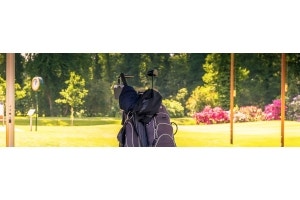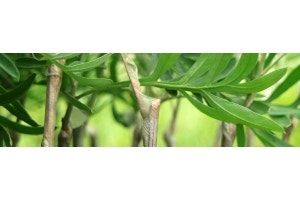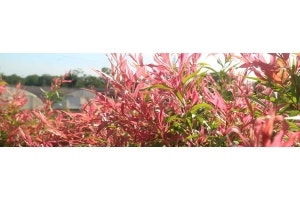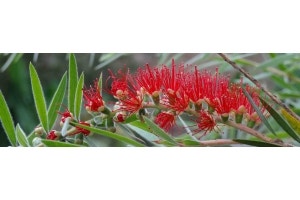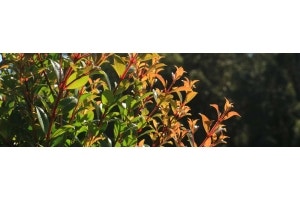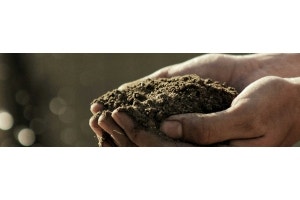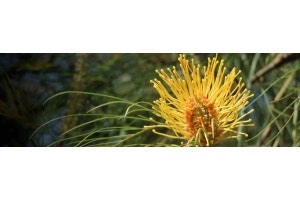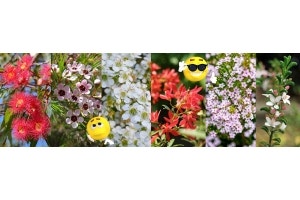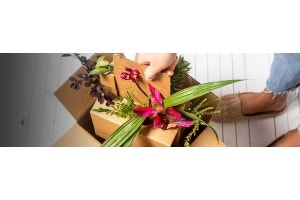
Bad bugs eat our plants and ruin crops, leaving our garden a mess and plants more susceptible to disease.
Good bugs (aka Beneficial Insects) help to control leaf chewing insects by making a meal out of them. While the good guys are moving about the garden eating mites, aphids and scale, they're also doing the important job of pollinating our plants.
The good
These bugs are good, and help us in the fight against the bad ones. Leave them alone! 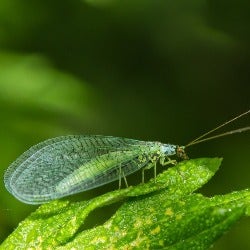
Lacewing
If you spy tiny white dots balanced on hair-like threads, attached to the stem of one of your plants, chances are they're lacewing eggs.
The larvae that emerge will eat most garden pests - aphids, mites, whitefly and insect eggs.
The larvae grow into translucent pale green moth-like insects. Lure helpful bugs like these to your garden by planting the kind of flowers they like - small flat flowers clustered together, so the pollen is easy to reach.
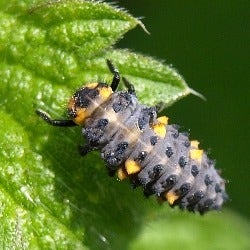
Ladybugs/Ladybirds
Almost everyone knows a full-grown ladybug, but few of us recognise the larvae. Hard to believe they're a seasoned predator!
They're twice as big as the adult, black and orange; and although they look fearsome to us, they are even more scary to a munching plant pest - they gobble up more pests than adult ladybugs.
You'll spot the unhatched ones as yellow eggs in clusters on the undersides of leaves. Leave them be and they'll protect your plants when they hatch.
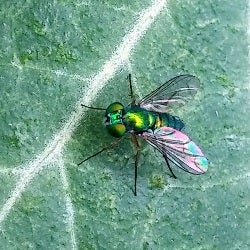
Long legged fly
This shimmery metallic fly with transparent wings and long slender legs preys on smaller leaf-sucking insects like aphids, thrips, and spider mites.
Its larvae live in moist soil and under bark, and eat other (pest) insect larvae.
Hover Fly
Moving like drones, these little flies dart forwards or sideways before pausing to hover (hence the name). Don't mistake them for a wasp - their black and yellow stripes help them escape predators, but they mean no harm. While adults help pollinate your plants, their hungry larvae munch up aphids, scale insects, thrips and caterpillars.
Some hoverflies lay their eggs in stagnant water, where their larvae eat mosquito larvae; and some scavenge in ant nests. Hoverflies are the good guys!
The bad
 Spring is the time when plants start growing again after their winter sleep. Buds form, blooms open, sap rises. And plants aren't the only things waking up and starting to grow.
Spring is the time when plants start growing again after their winter sleep. Buds form, blooms open, sap rises. And plants aren't the only things waking up and starting to grow.
If your garden gets a good frost (or even snow) this usually kills off any bad bugs. In warmer gardens, bugs survive over winter and emerge refreshed and hungry in spring. Bugs are loving the warm weather, and are breeding (and feeding!)
So every time you walk through your garden, take one minute to check over your favourite plants - under the leaves, at the base - for any pests. Bugs can multiply fast, so the sooner you spot them the better.
Caterpillars can be picked off and left on the lawn for birds; smaller bugs like aphids can be squashed, or for larger infestations, combatted with beneficial insects.
Photo: Jared Belson
The cure
Natural safe organic treatments
Too many bad guys in the garden? Try using a natural product like eco-neem to control leaf-chewing insects, and eco-oil to reduce pests while encouraging good bugs. Rather than eradicating all insects on contact, the solution is sprayed on the plant and only eaten by the chewing pests. This leaves the good guys to get on with their work.
Get the bug balance right by adding beneficial bugs to the garden. You can get these online and have them delivered to your door, like the Backyard Buddies range from Eco Organic Garden.
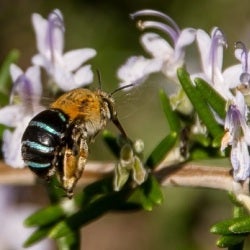
Homes for Insects
Help the good bugs along by building a bee house for them to shelter and overwinter in. More good bugs means less room for bad bugs.
Assemble air bricks, roof tiles, bamboo canes, twigs or drilled raw timber. Site your house somewhere shaded and sheltered where they can nest safely.
If you're not very handy, or want fast results, we have a range of ready-made houses and hotels. Don't forget to look after bats too - a tiny native bat can eat up to 400 mosquitoes in one night!

Plant flowers and herbs for pollinators
Help native fauna find a safe haven in your garden. These plants are essential for beneficial insects to feed on; and many have attractive flowers or fragrant leaves for us to enjoy.
Plant them separately, or in a mix of herbs and cover crops. You can find seeds for many of these here
• alyssum • bergamot • carrot • coriander • cosmos • daisies • dill • lavender • lemon balm • lobelia • mint • parsley • pea • poached egg plant • statice • zinnia
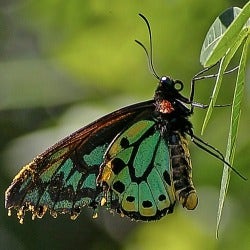
Plant native shrubs for habitat
A few of our rare butterflies only feed on a small number of local native plants; with increased development and construction, these plants are disappearing in the wild.
The same goes for native bees, and animals like koala, which are all suffering from loss of habitat.
• acacia • banksia • bottlebrush (Callistemon) • brush box (Lophostemon) • gum trees (Corymbia, Eucalyptus) • grevillea • hardenbergia • tea tree (Leptospermum) • melaleuca • myoporum • native violet (Viola hederacea) • pandorea






